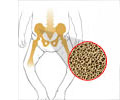In what is claimed to be of the first of its kind, French researchers report of the effectiveness of iron supplementation in a young child with attention-deficit/hyperactivity disorder.
In what is claimed to be of the first of its kind, French researchers report of the effectiveness of iron supplementation in a young child with attention-deficit/hyperactivity disorder.
The authors, writing in the November issue of the journal Pediatrics, present the case report of a 3-year-old child, who was referred to consultation for hyperactivity, attention deficit, impulsivity, and sleep problems.According to the parents, the child had difficulty sustaining attention, seemed not to listen, had difficulty awaiting his turn, was easily distracted, had difficulty playing quietly, and was always on the go. The child also had sleep problems (ie, delayed sleep onset and excessive motility in sleep).
The parents reported that some of these symptoms, such as hyperactivity and excessive impulsiveness, were present from the age of 2 years. The parents agreed that the behavior of the child caused a significant functional impairment.
According to the teachers, the child had attention problems and difficulty finishing his activities (such as painting and putting together puzzles), he was usually out of his seat, and he frequently interrupted others in class. The teachers reported that the child was clearly more hyperactive, inattentive, and slower in his activities than his peers.
Therefore, the synthesis of information from parents and teachers supported the diagnosis of attention-deficit/hyperactivity disorder (ADHD) according to DSM-IV criteria. He met Diagnostic and Statistical Manual of Mental Disorders, Fourth Edition criteria for ADHD. The child had low a serum ferritin level (13 ng/mL). After 8 months of treatment with Tardyferon (ferrous sulfate, 80 mg/day), his serum ferritin increased to 102 ng/mL.
Both parents and teachers reported considerable behavioral improvement. He was less hyperactive, more attentive, and less impulsive, although he still presented some difficulty delaying reaction when he was frustrated. The teachers also reported marked behavioral changes. The child was more organized in his activities (eg, painting, putting together puzzles, cutting), more attentive, and less forgetful and impulsive. His relationships with his peers were very much improved. He became progressively more collaborative during speech therapy. The quality of his sleep continued to be preserved.
Advertisement









